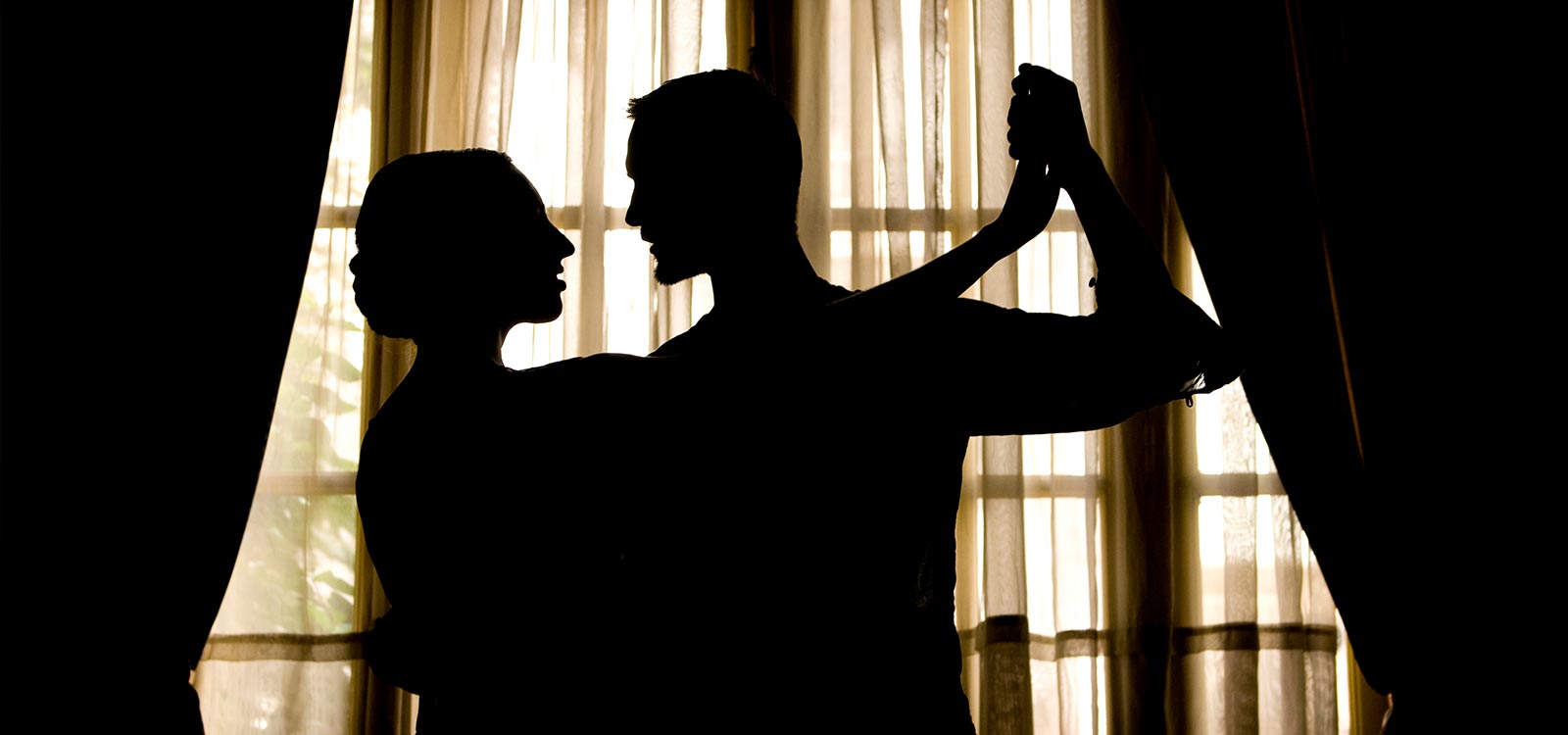Ballroom dancing is one of the great social activities. In a world that seems increasingly disconnected from inter-personal communications, the ability to be physically connected to another person, often a complete stranger, working together to create synchronized movement to music is incredibly appealing. But to ensure that magical quality, we need to follow a few basic rules for ballroom dancers.
I was reminded of this when I saw a Facebook post by a dance teacher admonishing participants in social dancing to follow two important rules. The two he mentioned sound pretty obvious when we hear them, yet are rarely talked about and aren’t necessarily interpreted the same way by everyone. He was annoyed that people were coming into his dance studio obviously sick, and that there was inappropriate contact in Salsa social dances.
As a dance teacher, I see lots of people breaking basic rules of social conduct, either because of a lack of awareness or a sense that social rules don’t apply to them. Here are the five most important rules for ballroom dancers.
Rule 1. Keep it appropriate
Partner dancing is intimate. Latin dances, and even the ballroom dances, are incredibly sexy. In the more advanced ballroom dances, physical contact of the centers is essential for fluid movement. We’re connected to one another in close quarters and some dances have very snug contact with intimate body parts. Some dances, and the willingness on the part of your partner for close contact can seem like an irresistible invitation to push the envelope. Don’t. Close contact is there to ensure efficient movement. It makes the dancing better and that’s why it’s accepted. Close connection is not a license to take things further. While some dances may give the appearance of sexual intimacy, the power of dance is being able to leave that impression at the appearance stage.
Years ago I attended a great workshop by respected Vancouver teacher and adjudicator Michel Guimond. The workshop was aimed primarily at teenage dancers getting started in competitive events. He said to the boys, “When you’re dancing ballroom with a girl, you’re going to feel two objects touching your chest. Get over it!” and he told the girls, “You’re sometimes going to feel his package between your legs while you dance. Get over it!” It was great advice. Close quarters dancing (unless it’s with someone you’re in a relationship with) is only effective when we can separate ourselves from the temptation of the emotional connection. Professionals make that a standard part of their job, but everyone is capable of keeping dance on a level that avoids these kind of problems. It becomes more enjoyable for all participants, so watch those hands and that innuendo. There’s no place for it on the dance floor.
Closely related to this issue is the use of dance classes or social dances as a place to find potential dates. Now, there’s nothing wrong with coming to dance class to meet people, but we see this carried out to an uncomfortable level and it’s just wrong. Men coming on to women in a class or dance setting is uncomfortable for the ladies and impacts dance schools when the women decide they’ve had enough of that behavior and leave. If you can’t handle dance as a strictly platonic social activity, then go find another activity.
Rule 2. Keep your breath fresh
When you’re dancing, you are close enough to your partner that your breath becomes an issue. Nothing can be more nauseating for your dance partner than waves of garlic, or some other strong scent wafting their way because of what you’ve been ingesting. This goes for beverages too. Coffee breath, protein shakes, coconut water and other products can easily cause your partner to wish they were with a different partner no matter how good your dance moves. Smokers should also be aware that their breath will smell like a dirty ashtray to someone who doesn’t smoke.
Brush your teeth before you go dancing. Breath sprays or quick solutions like Listerine Pocket Packs can be handy to keep in your shoe bag to help keep your partner from gagging while dancing with you.
Rule 3. Control your body odor
Just as important as your breath is body odor. Tango is said to have developed such a strong character of the lady’s head being held far away from the gentleman because the men didn’t wash after they finished their work on the ranches of Argentina. It’s just as important today. It’s no fun for your partner if they are nearly gagging because of your body odor. Make sure you are clean and fresh before you go dancing, and don’t wear clothes that smell as if they haven’t been washed since Jesus was a boy.
Naturally, after an hour or more of dance you’re likely to be sweating. That’s natural and not something to worry about unless your level of perspiration is extreme. If that’s an issue, take a clean backup shirt so you have something to change into halfway through.
Likewise, the amount of cologne or perfume you wear can be equally as difficult for your partner as your body odor. Some people are especially sensitive to these kind of products, so minimize your use of them or eliminate them altogether when going dancing.
If you can’t handle dance as a strictly platonic social activity, then go find another activity.
Rule 4. Stay home if you’re sick
There are certain times of year when head colds migrate like Fraser River salmon during spawning season. Everyone seems to get sick around us. If you’re sick, do everyone a favor and just stay home.
Even if you aren’t contagious, or if you keep your distance from those around you, hearing you cough and sniffle and blow your nose is uncomfortable for everyone and takes away from their enjoyment. Dance is a social activity and requires a level of social awareness. Even if it’s comfortable for you, consider that it may not be the same for those around you. Get rest, watch dance videos and you’ll be back before you know it.
Rule 5. Don’t teach on the social dance floor
Few things can be as annoying when someone is social dancing than having their partner try to teach them or correct them. This is only appropriate if you are dancing with a professional teacher who has a business relationship with you and you are paying for his or her time to be your partner. In fact, even though I’m a professional and sometimes get paid for my time as a social dance partner, I refuse to teach my partner in those settings. My goal when that happens is to be her partner and not her teacher. She wants to feel confident and enjoy the dancing, and the best way I can support her is to help her look her best on the dance floor by covering for mistakes or missteps, not by giving her advice that might lower her level of confidence. We regularly see people at social dances who stop to give unsolicited advice to their partner. Although the partners tend to be gracious and not show their annoyance, you can be sure that inside they’re thinking, “just shut up and dance.” Nobody wants to be taught by a non-professional.
Particularly grating, and seen on practice floors as well as social dance settings, is men who have no idea what the lady needs to do showing her what she needs to do. Find a teacher and let the professional provide that information!
Are you breaking any of these rules for ballroom dancers? If so, make a point of stopping that behavior and you’ll find more respect from your partners and greater enjoyment of dancing for its own sake.















A wonderful article George. I can’t tell you how many times in the social dance environment I have seen all 5 rules broken. It is refreshing to read it and it surely needs to be part of any dancer’s check lists. Dancing has to be fun….and following these simple and easy rules will add to the enjoyment for both parties. Cheers, Dave
Great article! Thanks for putting it all in black and white!